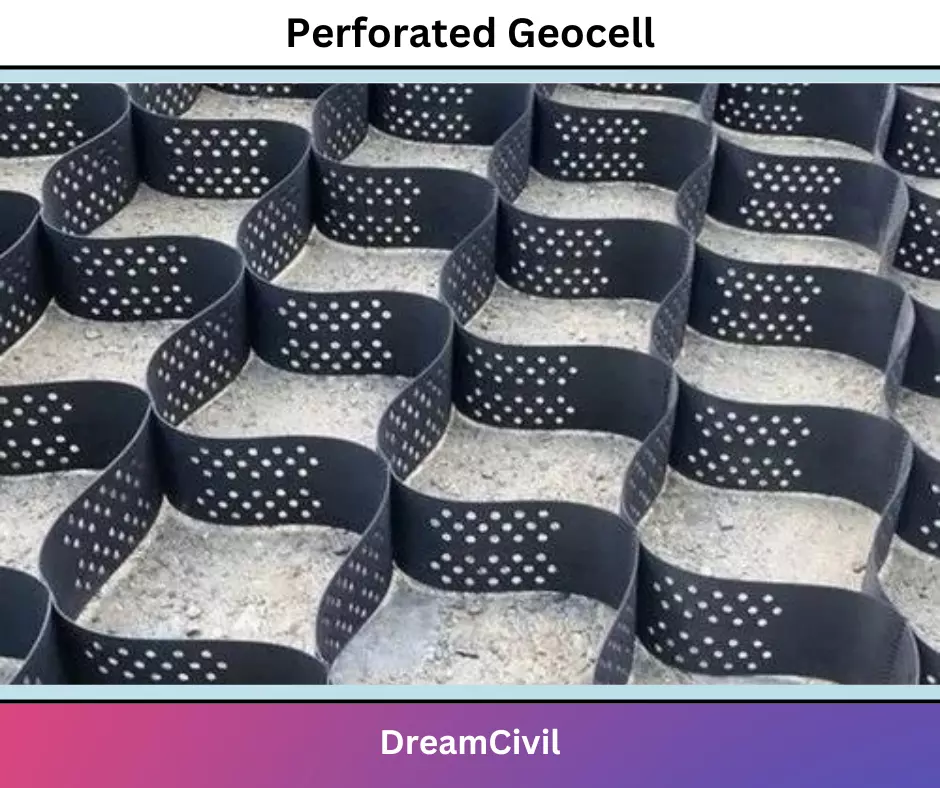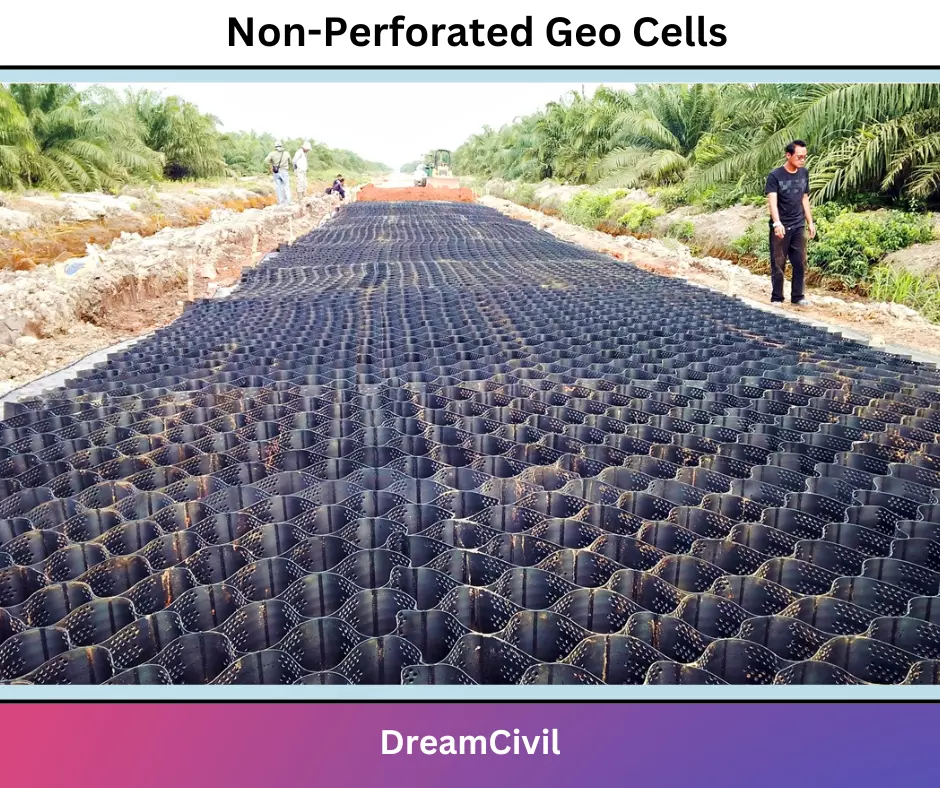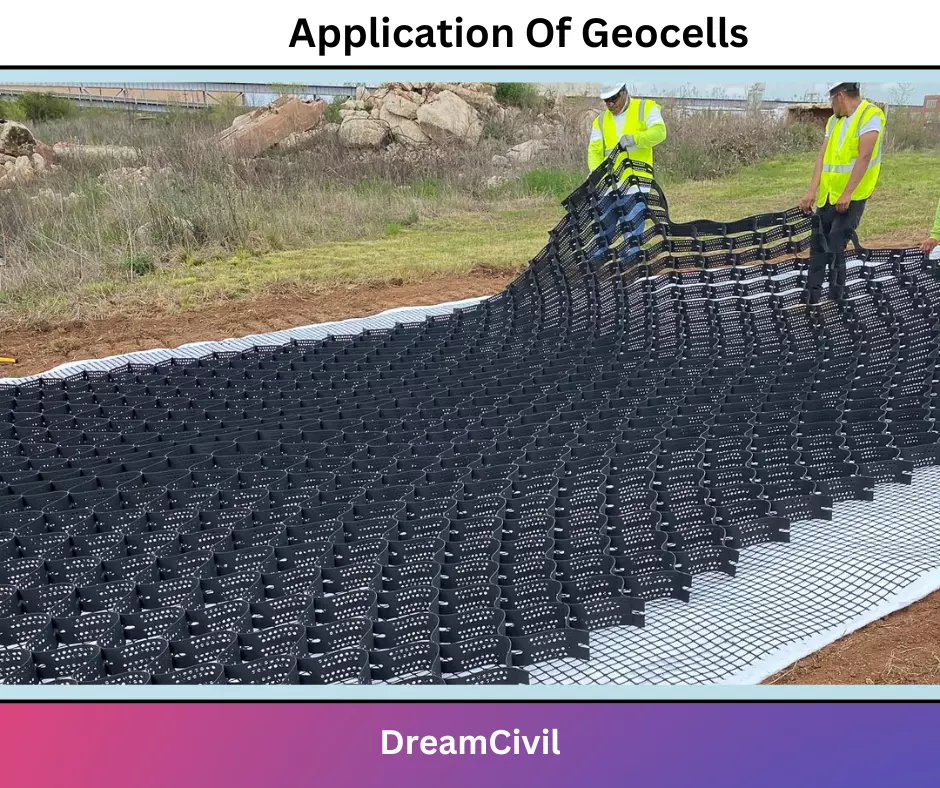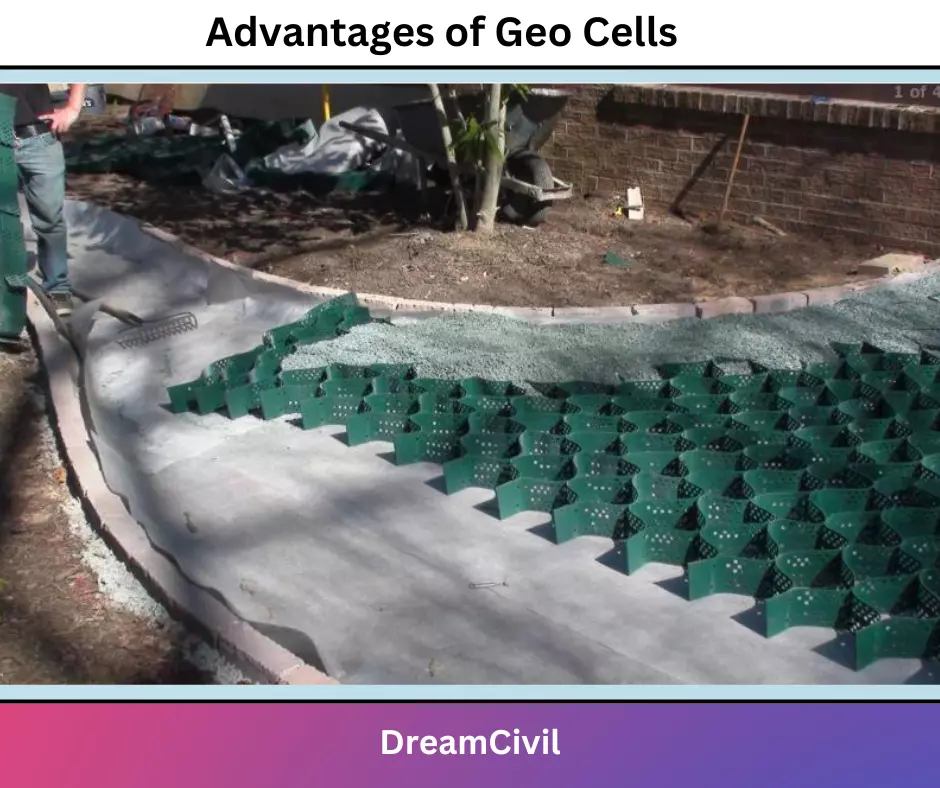Table of Contents
In this article, we will discuss Geocell in Road Construction.
| Summary Geocell has great potential to be employed as a cost-effective solution to various technical problems. Modem construction methods also extend the use of geocell-reinforced soil retaining walls which contain new cladding elements, reduce construction time and costs, and permit better aesthetic needs for the final structure. Generally, geocell is commonly employed in various environmental projects. |
Geocells are 3D, expandable panels prepared of high-density polyethylene (HDPE), polyester, or other polymeric material. During installation, the connected strips expand to form flexible, 3D cellular structural walls where backfill materials such as sand, earth, stone, etc., are positioned and compacted.
It makes a free-drainage system that carries the filling materials and controls movement by delivering traction through tensile reinforcement. Geocells thus enhance the structural and functional behavior of soil and aggregate filling material.
1. Different Types Of Geocell
Geocells come in different types and specifications that solve various problems in different soil types. Geocells are mainly categorized into two types:
1. Perforated Geocell
Perforated geocells own regular holes in the cell walls that enhance stress distribution and decrease deformation. This is accomplished through a big number of edges that turn into cells. The integrity of the geocell relies on the strength of the perforated strip and weld.
The tensile strength and seam weld strength of the geocell is specified by a tensile testing machine. The weld strength of the strip must be equivalent to or greater than the tensile strength of the strip itself.

2. Non-Perforated Geo Cells
Non-perforated Geo cells possess thick and smooth walls. It is usually a polymer sheet with a 3D mesh structure having a revetting link or ultrasonic welding.
Normally, unpaved roads are usually constructed on unstable soils, such as wide clay, peat bogs, or sand. If these roads are not constructed with suitable technology, then there is a huge chance that these materials will crumble and threaten road stability.
Geocells provide the solid stiffness and creep resistance required to reinforce soft soiLs. They control the shrinking and cracking of the clay, facilitate lateral dispersion and filtration of sandy soils, and strengthen the subsoil in all soft soils.
Road maintenance with cellular restraint systems keeps them in the right situations. Roads can have maintenance problems due to inappropriate underground needs (due to improper characteristics of subsoil), which can guide to damage, cracking, washing out, and settlement of unpaved surfaces.
By employing geocells permanent and temporary roads can be made, and their ground stability requirement can be enhanced. Geocell enhances the load-bearing capacity of granular pavements and porous surfaces employed in heavy machines, are and, at the exact time, decreases costs.
The system decreases the quantity of water on the surface and replenishes groundwater supplies. In addition, the traffic or parking lot can be covered with plants or small weeds, which is a useful solution for saving space.
No equipment is needed to expand the geocell sections, which facilitates installation because the cells can be positioned in the softest substrates, and no low-pressure equipment is needed for filling. Fully loaded dump trucks can effortlessly unload cargo and disperse granular material inside and on the geocell.

3. Application Of Geocells
The application of Geocells in the following regions are as follows:
a. Strengthening the shoulder on the road,
b. Strengthening the waterfront,
c. Geocells are used to construct geomembrane protection,
d. Geocells are used in building a geocell cell restriction system,
e. Roads, construction of highways,
f. They can be used in strengthening the Military Route,
g. Reinforcement under load,
h. They are employed in channel protection,
i. They are employed in Airport runways,
j. They can be employed in making access roads,
k. Hidden area watershed,
l. Intermodal / port facilities,
m. These are employed in Shipping terminals and containers.

4. Advantages Of Geocell In Road Construction
The following are the advantages of geocells in road construction:
a. Available in a variety of cell sizes, depths, section Lengths, and facade rotors to suit the needs of the project.
b. Geocell gives strong protection to the impervious layer
c. It Provides significant subclass deformation without Loss of structural integrity.
d. Transportation and installation of geocell are easy
e. High resistance to tensile stress, tearing, punching, and fatigue.
f. Geocell is an environmentally friendly material.
g. Geocetts are Lightweight, cheap, and have high durability.
h. The use of geocell is very economical as compared to others.
i. They increase the reliability of the structure and the structure’s Life span.
j. They help to form embankments on poor Load-bearing soiL
k. They help to form earth retention watts and soil sound-absorbing structures.

5. Disadvantages Of Geocell In Road Construction
The following are the disadvantages of geocells in road construction:
a. The Long-term performance of the specially formulated resin employed to make the geocell must be guaranteed by utilizing appropriate additives, including antioxidants, ultraviolet filters, and fillers.
b. Management, storage, and installation must be ensured by careful quality control and quality assurance.

| Read Also: Home Foundation Repair |

